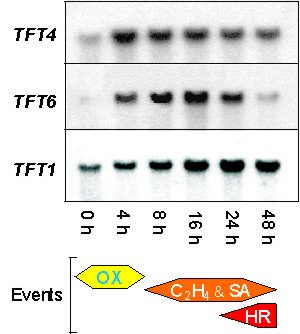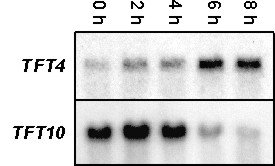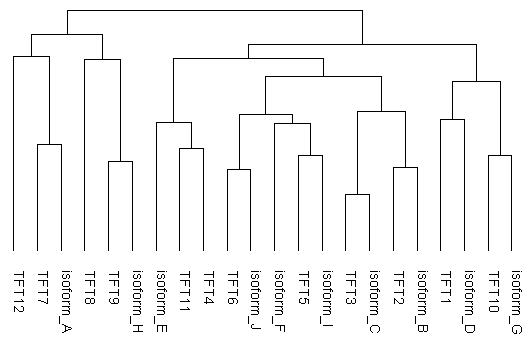|
We have identified the
twelve tomato 14-3-3 genes above, named TFT1-TFT12, via cDNA
cloning and searches of the TIGR “Tomato Gene Index” EST database. By comparing
the abundance of individual 14-3-3 gene transcripts in the various tissue-specific
cDNA libraries that make up the Tomato Gene Index, we found that
there are significant differences in relative levels of 14-3-3 expression
in different tissues. There were a total of 378 ESTs representing twelve
14-3-3 genes in the database that we searched (version 7.1), ranging from
2 to 63 ESTs per gene. Notably, ESTs from each gene exhibited a different
distribution pattern within the database, indicating that none of the tomato
14-3-3s are co-regulated. Furthermore, different tissues displayed distinctive
compositions of 14-3-3 isoforms. For example, the figure below shows the
difference in composition of the pools of 14-3-3 transcripts in roots and
fruits. Note especially TFT7 and TFT9.
|




